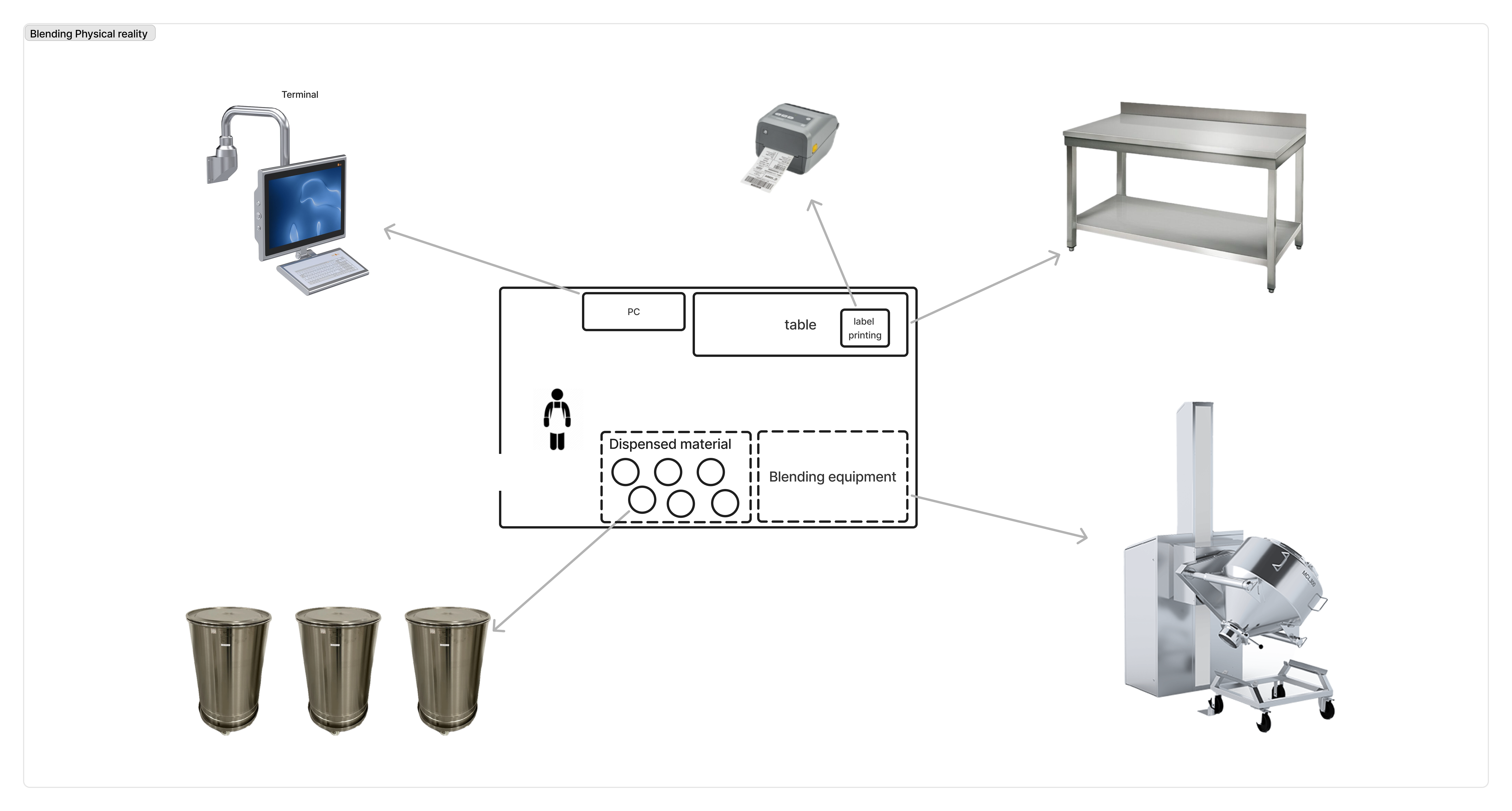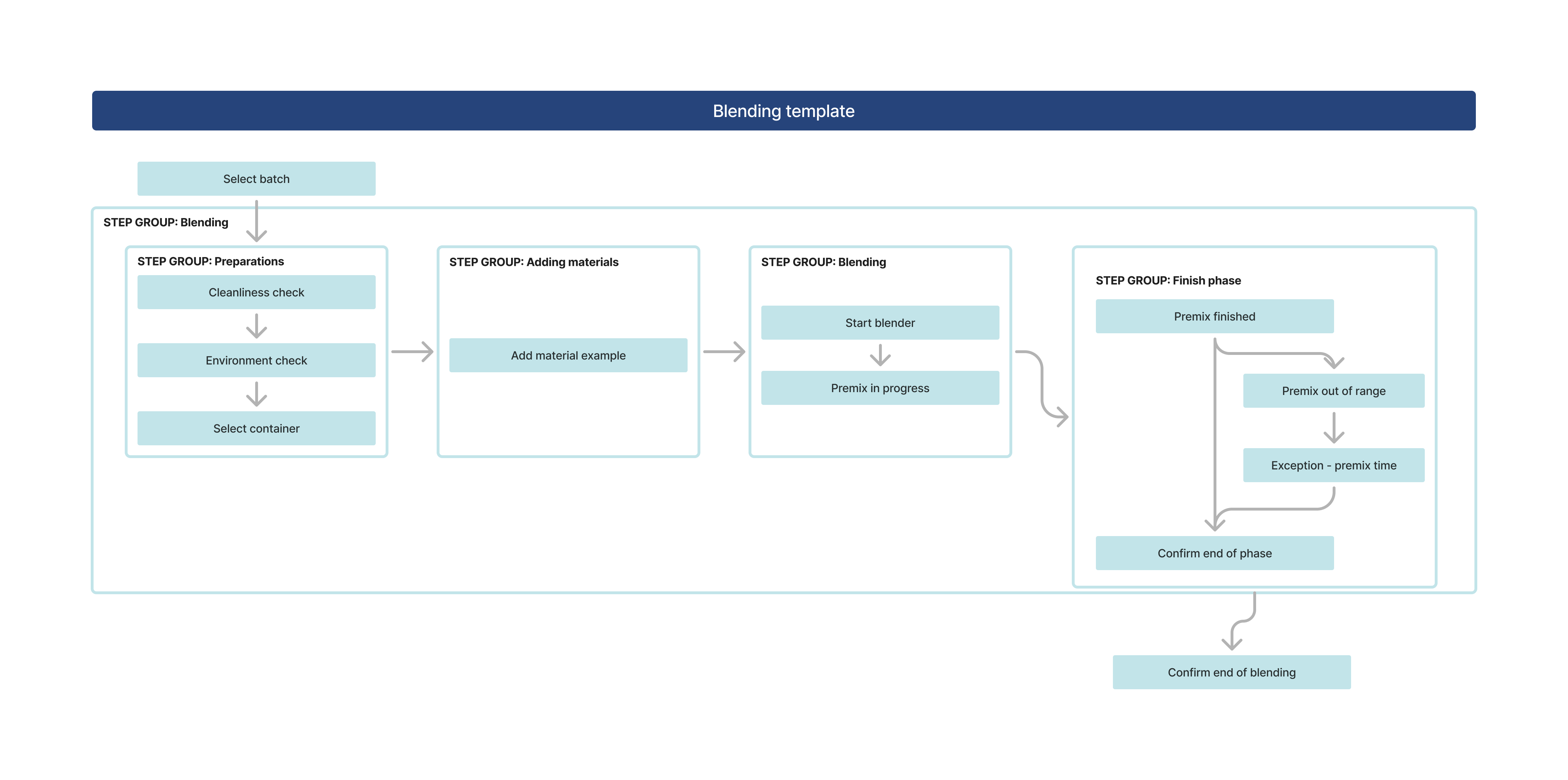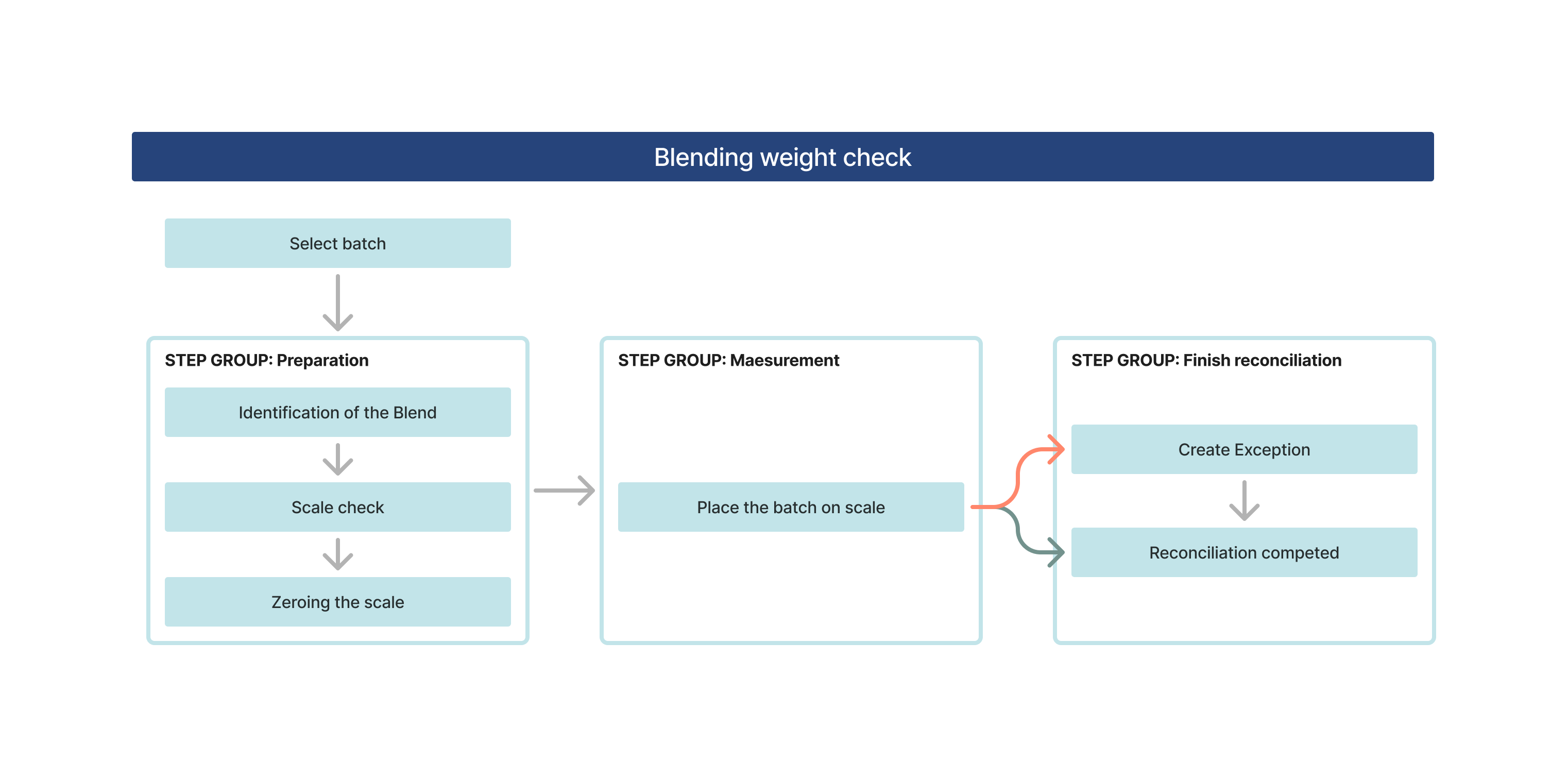Download the Blending App Group.
Découvrez les fonctions principales du groupe d'applications Blending, comment utiliser ces fonctionnalités et comment vous pouvez relier différentes applications au sein du groupe. L'article inclut également les étapes de configuration essentielles nécessaires à l'utilisation des applications, ainsi que les options de personnalisation. Ce groupe d'applications fait partie de la suite d'applications Composable MES for Pharma de Tulip.
Portée physique

Les matériaux distribués sont transférés de la zone de pesage à la salle de mélange dans des conteneurs métalliques. Dans le processus de mélange, les matériaux sont distribués dans la machine de mélange pour chaque phase consécutivement. Les matériaux sont étiquetés et utilisés dans la phase de mélange suivante ou le mélange final est transféré pour être contrôlé. Le contrôle du poids du mélange permet de calculer le poids net du matériau et, s'il est correct, de le transférer dans la salle de fabrication des tables.
Tables de tulipes utilisées dans le groupe d'application
Les principaux tableaux utilisés par cette application sont le tableau des lots et le tableau des matériaux. Les matériaux distribués sont ajoutés à un type de prémélange ou de mélange qui peut passer par les processus de formulation suivants. Les autres tables utilisées par cette application sont les tables Commentaires et exceptions, Échantillons, Corrections et Contenants. Les deux tables qui permettent l'acheminement correct entre les applications de ce groupe d'applications et d'autres applications sont les tables Stations et Déroulement du processus.
:::(Info) If you'd like to learn more about Tulip's Common Data Model (CDM)
for Pharma, check out this link.
:::
Applications du groupe d'applications "Mélange" (Blending App Group)
Application du processus de mélange

Dans la première phase, le prémélange est créé à partir des trois matériaux prédéfinis de la liste des matériaux. Le produit utilisé doit passer par des étapes de préparation, au cours desquelles l'opérateur confirme que l'environnement et les équipements utilisés sont ceux prévus. Il peut enregistrer que les matériaux ont été ajoutés et confirmer le temps de mélange. Si le temps de mélange est inférieur au temps prévu, l'application passe automatiquement à l'étape de consignation des exceptions, où l'opérateur doit consigner les détails de l'événement inattendu.
La deuxième phase du processus de mélange est identique à la première, à l'exception de la liste des matériaux requis pour créer le mélange. Ici, le prémélange créé précédemment sert d'ingrédient à incorporer, comme les autres produits distribués.
Une fois les deux phases terminées, l'opérateur clique sur Confirmer et l'application retourne à l'application de suivi des lots.
Modèle de mélange

Le modèle de mélange est une version généralisée et personnalisable de l'application de processus de mélange. Le modèle comprend un modèle de phase, qui doit être dupliqué pour chaque phase de mélange. Au sein de la phase, il existe une étape appelée Distribuer [nom du matériau]. Cette étape doit être dupliquée pour chaque matériau qui est une entrée de la phase donnée. Les modifications à apporter à cet exemple d'étape sont le nom de l'étape, les instructions, les symboles SGH et les déclencheurs du bouton Confirmer. Ces éléments permettent de vérifier que la matière portant le bon identifiant est ajoutée au mélange.
Vérification du poids du mélange

Cette application permet simplement de vérifier si le poids du mélange final se situe dans la fourchette acceptable, qui est indiquée dans un texte statique. L'application nécessite l'intégration d'une balance pour obtenir le poids brut du lot. Sur la base du poids du conteneur et du poids brut, le poids net est automatiquement calculé et comparé aux limites de poids prédéfinies.
Configuration et personnalisation
Les applications de ce groupe d'applications ont les configurations nécessaires pour les déployer dans votre système d'applications. Il existe également des options permettant de personnaliser les composants de l'application en fonction de vos besoins spécifiques.
:::(Info)Learn more about the general configuration for the composable MES for Pharma app suite here.
:::
Options de connexion de l'application avec d'autres applications
Pesage en station (ou autres applications de pesage et de distribution)
Les matériaux utilisés pour les mélanges peuvent être créés au cours du processus de pesage et de distribution. L'application de pesage en station fournit une solution pour ce processus où les enregistrements de matériaux sont créés dans la table Matériaux et liés au lot.
Mise en table
Après le processus de mélange, le mélange peut être pressé en comprimés.
Examen eBR du produit semi-fini
Comme toutes les applications de processus dans le Composable MES for Pharma, l'application de mélange enregistre beaucoup d'informations en tant que données d'achèvement de l'application. Les informations sur certains artefacts, comme les commentaires, les exceptions ou les échantillons prélevés au cours du processus sont stockés dans des tables Tulip. Les applications de révision eBR permettent la révision structurée de tous ces artefacts.
